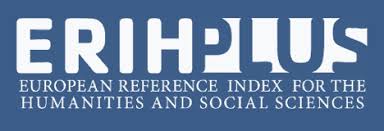Aportes para el estudio de la nutrición humana en el mundo Romano (siglos II a.n.e.- III n.e.)
Resumen
En la presente comunicación analizaremos las formas en que se ha abordado la nutrición en la historiografía romana de las últimas décadas. Observaremos que los trabajos que la refieren, aunque reflejan las formas hegemónicas de entender la nutrición humana desde el campo de las ciencias médicas, no parten de una definición concreta. Sostendremos que estas ideas no resultan operativas para analizar a las sociedades antiguas y propondremos, como alternativa, la utilidad de la definición tridimensional de nutrición ofrecida en la Declaración de Giessen de 2005. Argumentaremos que esta definición ofrece un marco teórico integrativo y multidimensional particularmente relevante para los estudios históricos sobre alimentación y nutrición. Como consecuencia ofreceremos algunas ideas respecto a cómo puede adecuarse dicho marco teórico para el análisis de la nutrición en el mundo romano entre los siglos II a.n.e. y III n.e.
Palabras clave
Referencias
Amouretti, Marie-Claire (1986). Le pain et l’huile dans la Grèce antique. Besançon: Université de Franche-Comté.
André, Jacques (1961). L’alimentation et la cuisine à Rome. París: Les Belles Lettres.
Aymard, Maurice (1975). Pour l’histoire de l’alimentation: quelques remarques de méthode. Annales. Économies, Sociétés, Civilisations. 30e année (N. 2-3), pp. 431-444.
Beauman, Christopher, Cannon, Geoffrey, Ibrahim Elmadfa, Peter Glasauer, Ingrid Hoffmann, Markus Keller, Michael Krawinkel, Tim Lang, Claus Leitzmann, Bernd Lötsch, Barrie M Margetts, Anthony J McMichael, Klaus Meyer-Abich, Ulrich Oltersdorf, Massimo Pettoello-Mantovani, Joan Sabaté, Prakash Shetty, Marco Sória, Uwe Spiekermann, Colin Tudge, Hester H Vorster, Mark Wahlqvist y Mariuccia Zerilli-Marimò (2005). The Giessen declaration. Public Health Nutrition, Vol. 8, Nº 6 A, pp. 783-786.
Biltekoff, Charlotte (2012). Critical Nutrition Studies. En Pilcher, Jeffrey (Ed.) The Oxford Handbook of Food History (pp. 172-190). Nueva York: Oxford.
Bisel, Sara (1991). The Human Skeletons of Herculaneum. International Journal of Anthropology, Vol. 6, N°1, pp. 1-20.
Bisel, Sara (1986). The People of Herculaneum AD 79. Helmantica: revista de filología clásica y hebrea, Vol. 37, N°112, pp. 11-23.
Bisel, Sara (1988). Nutrition in first century Herculaneum. Anthropologie (1962-), Vol. 26 n° 1, pp. 61-66.
Broekaert, W. (2019). Wine and Other Beverages. En Erdkamp, Paul y Holleran, Claire (Eds.) The Routledge Handbook of Diet and Nutrition in the Roman World (pp. 140-149). Oxford: Routledge, Taylor & Francis Group.
Brothwell, Don y Brothwell, Patricia (1969). Food in Antiquity: A Survey of the Diet of Early Peoples. Londres: JHU Press.
Cannon, Geoffrey y Leitzmann, Claus (2005a). The New Nutrition Science Project. Public Health Nutrition, Vol. 8, N° 6a, pp. 673-694.
Cannon, Geoffrey y Leitzmann, Claus (2005b). Dimensions, Domains and Principles of the New Nutrition Science. Public Health Nutrition, Vol. 8, N°6a, pp. 787-794.
Cannon, Geoffrey y Leitzmann, Claus (2006). The New Nutrition Science Project. Scandinavian Journal of Food and Nutrition, Vol. 50, N°1, pp. 5-12.
Colominas, Lidia, Schlumbaum, Ángela, y Saña, María (2014). The Impact of the Roman Empire on Animal Husbandry Practices: Study of the Changes in Cattle Morphology in the North-East of the Iberian Peninsula through Osteometric and Ancient DNA Analyses. Archaeological and Anthropological Sciences, Vol. 6, N°1, pp. 1-16.
Crowe Fiona, Sperduti, Alessandra, O’Connell, Tamsin, Craig, Oliver, Kirsanow, Karola, Germoni, Paola, Macchiarelli, Roberto, Garnsey, Peter y Bondioli, Luca (2010). Water‐Related Occupations and Diet in Two Roman Coastal Communities (Italy, First to Third Century AD): Correlation between Stable Carbon and Nitrogen Isotope Values and Auricular Exostosis Prevalence. American Journal of Physical Anthropology, Vol. 142, N° 3, pp. 355-366.
Domanska, Eva (2010). Beyond Anthropocentrism in Historical Studies. Historein, Vol. 10, pp. 118-130.
Donahue, John (2004). The Roman Community at Table during the Principate. Ann Arbor: University of Michigan Press.
Erdkamp, Paul (2019). War, Food, Climate Change, and the Decline of the Roman Empire. Journal of Late Antiquity, Vol. 12, N°2, pp. 422-465.
Erdkamp., Paul (2021). A Historian’s Introduction to Paleoclimatology. En Erdkamp, Paul, Manning, Joseph, y Verboven, Koenraad (Eds.) Climate Change and Ancient Societies in Europe and the Near East (pp. 1-24). Cham: Springer Nature- Palgrave Macmillan.
Erdkamp, Paul y Holleran, Claire (Eds.) (2019). The Routledge Handbook of Diet and Nutrition in the Roman World. Oxford: Routledge. Taylor & Francis Group.
Etkin, Nina y Ross, Paul (1982). Food as Medicine and Medicine as Food: An Adaptive Framework for the Interpretation of Plant Utilization among the Hausa of Northern Nigeria. Social Science & Medicine, Vol. 16, N° 17, pp. 1559-1573.
Flandrin, Jean Louis, Montanari, Massimo y Sonnenfeld, Albert (Eds.). (1999). Food: A Culinary History from Antiquity to the Present. Columbia University Press.
Flemming, Rebecca (2000). Medicine and the Making of Roman Women: Gender, Nature, and Authority from Celsus to Galen. Oxford: Oxford University Press.
Fogel, Robert y Engerman, Stanley (1974). Time on the Cross: Evidence and Methods, a Supplement (Vol. 2). Nueva York: Little Brown & Company.
Foxhall, Lin y Forbes, Hamish (1982). Sitometreia: The Role of Grain as a Staple Food in Classical Antiquity. Chiron, Vol. 12, pp. 41-90.
Frayn, Joan (1979). Subsistence Farming in Roman Italy. Oxford: Oxford University Press.
Garnsey, Peter (1988). Famine and Food Supply in the Graeco-Roman World. Cambridge: Cambridge University Press.
Garnsey, Peter (1998). Cities, Peasants and Food in Classical Antiquity: Essays in Social and Economic History. Cambridge: Cambridge University Press.
Garnsey, Peter (1999) Food and Society in Classical Antiquity. Cambridge: Cambridge University Press.
Goodchild, Helen (2007). Modelling Roman Agricultural Production in the Middle Tiber Valley, Central Italy. (Tesis Doctoral inédita). University of Birmingham, Birmingham.
Goody, Jack (1982). Cooking, Cuisine and Class: A Study in Comparative Sociology. Cambridge University Press.
Gowers, Emily (1993). The Loaded Table: Representations of Food in Roman Literature. Oxford: Oxford University Press.
Harris, Marvin (1998). Good to Eat: Riddles of Food and Culture. Prospects Heights: Waveland Press.
Heinrich, Frits (2019). Cereals and Bread. En Erdkamp, Paul y Holleran, Claire (Eds.) The Routledge Handbook of Diet and Nutrition in the Roman World (pp. 101-115). Oxford: Routledge, Taylor & Francis Group.
Heinrich, Frits y Hansen, Annette (2021). A Hard Row to Hoe: Ancient Climate Change from the Crop Perspective. En Erdkamp, Paul, Manning, Joseph y Verboven, Koenraad (Eds.) Climate Change and Ancient Societies in Europe and the Near East (pp.25-80). Cham: Palgrave Macmillan.
Holleran, Claire (2012). Shopping in Ancient Rome: The Retail Trade in the Late Republic and the Principate. Oxford: Oxford University Press.
Horden, Peregrine y Purcell, Nicholas (2000). The Corrupting Sea: A Study of Mediterranean History. Oxford: Wiley-Blackwell.
Jasny, Naum (1944). Wheat Prices and Milling Costs in Classical Rome. En Wheat Studies. Stanford University, Food Research Institute, Vol. 20, N° 04, pp. 1-38.
Jongman, Willem (2007). The Early Roman Empire: Consumption. En Scheidel, Walter, Morris, Ian y Saller, Richard (Eds.) The Cambridge Economic History of the Greco-Roman World (pp. 592-618). Cambridge: Cambridge University Press.
Killgrove, Kristina (2005). Bioarchaeology in the Roman World. Tesis Doctoral inédita. University of North Carolina: Chapel Hill.
Killgrove, Kristina (2019). Using Skeletal Remains as a Proxy for Roman Lifestyles: The Potential and Problems with Osteological Reconstructions of Health, Diet, and Stature in Imperial Rome. En Erdkamp, Paul y Holleran, Claire (Eds.) The Routledge Handbook of Diet and Nutrition in the Roman world (pp. 245-258). Oxford: Routledge, Taylor & Francis Group.
Killgrove, Kristina (2014). Bioarchaeology in the Roman Empire. En Smith, Claire (Ed.) Encyclopedia of Global Archaeology (pp. 876-882). Springer, DOI: 10.1007/978-1-4419-0465-2.
Killgrove, Kristina y Tykot, Robert (2013). Food for Rome: A Stable Isotope Investigation of Diet in the Imperial period (1st-3rd Centuries AD). Journal of Anthropological Archaeology, Vol. 32, N° 1, pp. 28-38.
Leonard, William, Robertson, Marcia y Snodgrass, Josh (2010). What Did Humans Evolve to Eat?: Metabolic Implications of Major Trends in Hominid Evolution. En Moffat, Tina y Prowse, Tracy. (Eds.) Human Diet and Nutrition in Biocultural Perspective: Past Meets Present (pp. 14-34). Oxford: Berghahn Books.
MacKinnon, Michael (2019). Meat and Other Animal Products. En Erdkamp, Paul y Holleran, Claire (Eds.) The Routledge Handbook of Diet and Nutrition in the Roman World (pp. 150-162). Oxford: Routledge, Taylor & Francis Group.
Moritz, Ludwig Alfred (1958). Grain-Mills and Flour in Classical Antiquity. Oxford: Clarendon Press.
Murray, Oswyn (Ed.). (1990). Sympotica: A Symposium on the Symposion. Oxford: Oxford University Press.
Prowse, Tracy (2001). Isotopic and Dental Evidence for Diet from the Necropolis of Isola Sacra (1st-3rd Centuries AD), Italy. (Tesis Doctoral Inédita). McMaster University: Hamilton, Canada.
Prowse, Tracy, Schwarcz, Henry, Saunders, Shelley, Macchiarelli, Roberto y Bondioli, Luca. (2005). Isotopic Evidence for Age‐Related Variation in Diet from Isola Sacra, Italy. American Journal of Physical Anthropology, Vol. 128, N° 1, pp.2-13.
Prowse, Tracy, Saunders, Shelley, Schwarcz, Henry, Garnsey, Peter, Macchiarelli, Roberto y Bondioli, Luca (2008). Isotopic and Dental Evidence for Infant and Young Child Feeding Practices in an Imperial Roman Skeletal Sample. American Journal of Physical Anthropology: The Official Publication of the American Association of Physical Anthropologists, Vol. 137, N° 3, pp. 294-308.
Prowse, Tracy (2011). Diet and Dental Health through the Life Course in Roman Italy. En Agarwal, Sabrina y Glencross, Bonnie (Eds.) Social Bioarchaeology (pp. 410-437). Malden: John Wiley & Sons.
Redfern, Rebecca, Gowland, Rebecca y Harlow, Mary (2011). A Bioarchaeological Perspective on the Pre-Adult Stages of the Life Course: Implications for the Care and Health of Children in the Roman Empire. En Harlow, Mary y Larson Loven, Lena (Eds.) Families in the Roman and Late Antique Roman World (pp. 111-140). London: Continuum International Publishing Group.
Redfern, Rebecca, Gowland, Rebecca, Millard, Andrew, Powell, Lindsay y Gröcke, Darren (2017). “From the Mouths of Babes”: A Subadult Dietary Stable Isotope Perspective on Roman London (Londinium). Journal of Archaeological Science, Vol. 19, pp. 1030-1040.
Robinson, Mark y Rowan, Erica (2015). Roman Food Remains in Archaeology and the Contents of a Roman Sewer at Herculaneum. En Wilkins, John y Nadeau, Robin (Eds.) A Companion to Food in the Ancient World (Vol. 89) (pp. 89-105). Oxford: John Wiley & Sons.
Rosenstein, Nathan (2004). Rome at War: Farms, Families, and Feath in the Middle Republic. Chapel Hill: University of North Carolina Press.
Rowan, Erica (2019). Olives and Olive Oil. En Erdkamp, Paul y Holleran, Claire (Eds.) The Routledge Handbook of Diet and Nutrition in the Roman World (pp. 129-139). Oxford: Routledge, Taylor & Francis Group.
Sallares, Robert (1991). The Ecology of the Ancient Greek World. New York: Cornell University Press.
Sen, Amartya (1982). Poverty and Famines: An Essay on Entitlement and Deprivation. Oxford: Oxford University Press.
Sen, Amartya (1987). Hunger and Entitlements. Helsinki: World Institute for Development Economics Research of the United Nations University. Forsa: Auranen.
Slater, William (Ed.) (1991). Dining in a Classical Context. Ann Arbor: University of Michigan Press.
Spicoli, Marianela (2023). Alimentación y nutrición de mujeres y niños en el mundo romano (siglos II a.n.e. y III n.e.) (Tesis Doctoral Inédita) UNLP-VUB, La Plata- Bruselas.
Tchernia, André (1986). Le vin de l’Italie romaine. Essai d’histoire économique d’après les amphores. Bibliothèque des Écoles françaises d’Athènes et de Rome, Vol. 261, N° 1. Rome: École française de Rome.
Tchernia, A. (2000). La vente du vin. En Lo Cascio, Elio (Ed.) Mercati permanenti e mercati periodici nel mondo romano (pp. 199-209). Bari: Edipuglia.
Totelin, Lawrence (2015). When Foods become Remedies in Ancient Greece: The Curious Case of Garlic and Other Substances. Journal of Ethnopharmacology, Vol. 167, pp. 30-37.
von Braun, Joachim, Afsana, Kaosar, Fresco, Louise y Hassan, Mohamed (2021). Science and Innovations for Food Systems Transformation and Summit Actions. Scientific Group of the UN Food System Summit. Cham: Springer Nature.
White, Kenneth Douglas (1976). Food Requirements and Food Supplies in Classical Times in Relation to the Diet of the Various Classes. Progress in Food & Nutrition Science, Vol. 2, N° 4, pp.143-191.
Wilkins, John y Hill, Shaun (2009). Food in the Ancient World. Oxford: Blackwell Publishing.
Wilkins, John y Nadeau, Robin (Eds.) (2015). A companion to Food in the Ancient World (Vol. 89). Oxford: John Wiley & Sons.
Witcher, Robert (2006). Agrarian Spaces in Roman Italy: Society, Economy and Mediterranean Agriculture. Arqueología espacial (Paisajes agrarios), Vol. 26, pp. 341-359.
Enlaces refback
- No hay ningún enlace refback.
Copyright (c) 2025 Pasado Abierto

Este obra está bajo una licencia de Creative Commons Reconocimiento-NoComercial 4.0 Internacional.
.jpg) |
ISSN 2451-6961 (en línea) Pasado Abierto Se encuentra bajo una licencia Creative Commons Attribution-NonCommercial 4.0 International License. |
| Incluida en: | |
| ROAD https://portal.issn.org/resource/ISSN/2451-6961 |
| LatinREV https://latinrev.flacso.org.ar/mapa |
| Latindex Directory https://www.latindex.org/latindex/ficha?folio=26011 |
| Google Scholar Link |
| BASE (Bielefeld Academic Search Engine) Link |
 | Latin American (Association of Academic Journals of Humanities and Social Sciences) Link |
 | MIAR (Information Matrix for Journal Analysis) Link |
 | SUNCAT Link |
 | WorldDCat Link |
 | Ibero-American News Link |
| CZ3 Electronische Zeitschriftenbibliothek Link |
| Open Science Directory Link |
| EC3 metrics Link |
| JournalsTOCs Link |
| Malena Link |
| Evaluada por: | |
 | Latindex Catalog 2.0 Link |
 | Basic Core of Argentine Scientific Journals Link |
 | DOAJ (Directory of Open Access Journals) Link |
 | ERIHPLUS (European Reference Index for the Humanities and Social Sciences) Link |
 | REDIB (Ibero-American Network of Innovation and Scientific Knowledge) Link |
 | CIRC (Integrated Classification of Scientific Journals) Link |
| Pasado Abierto usa el identificador persistente: | |
|















.png)